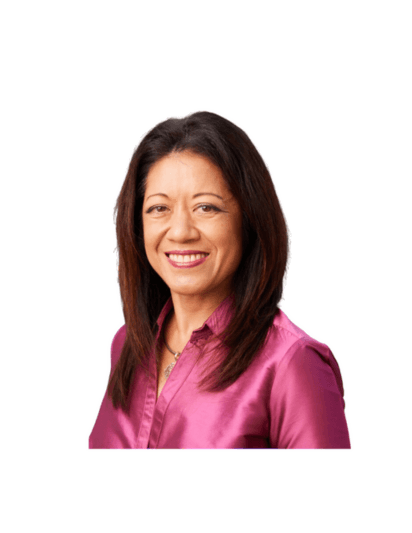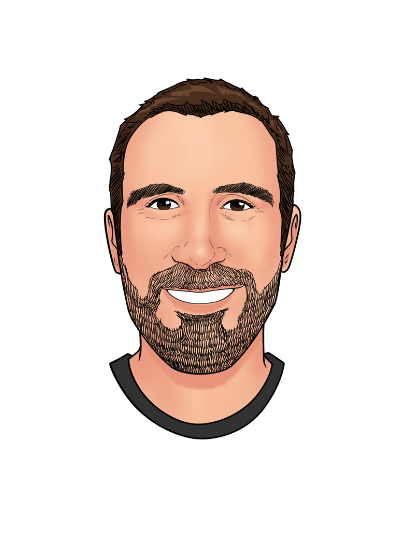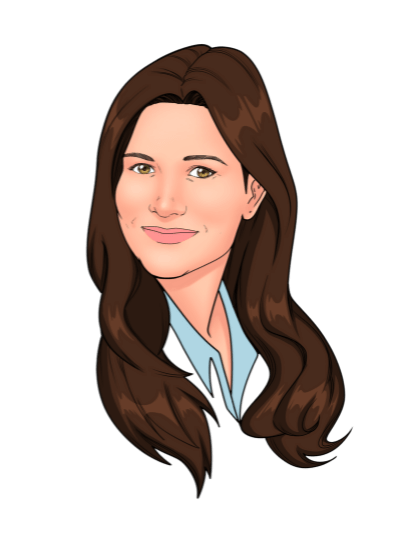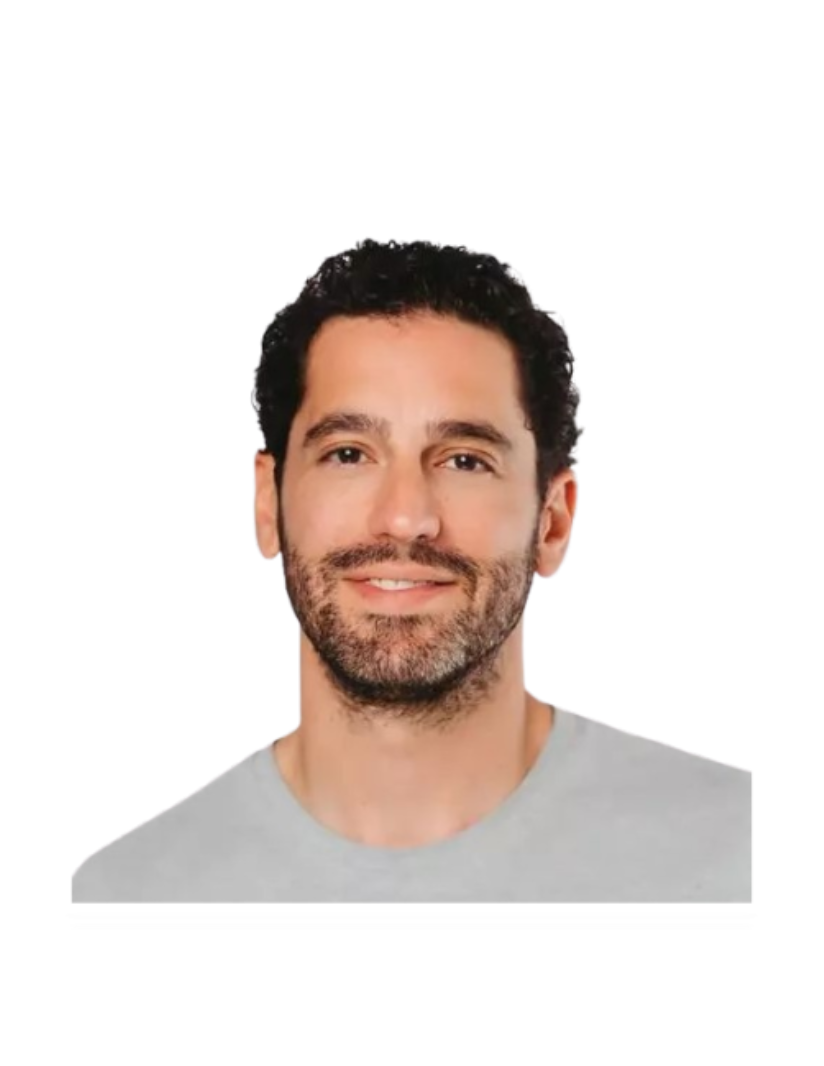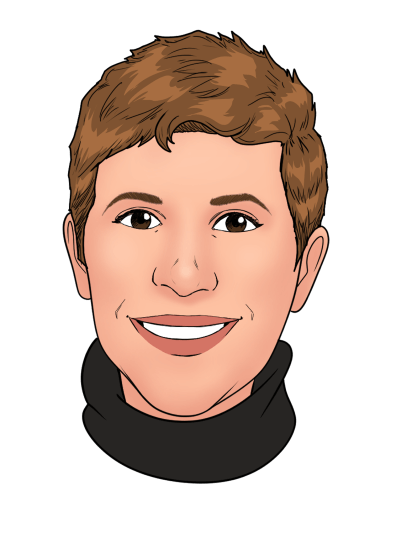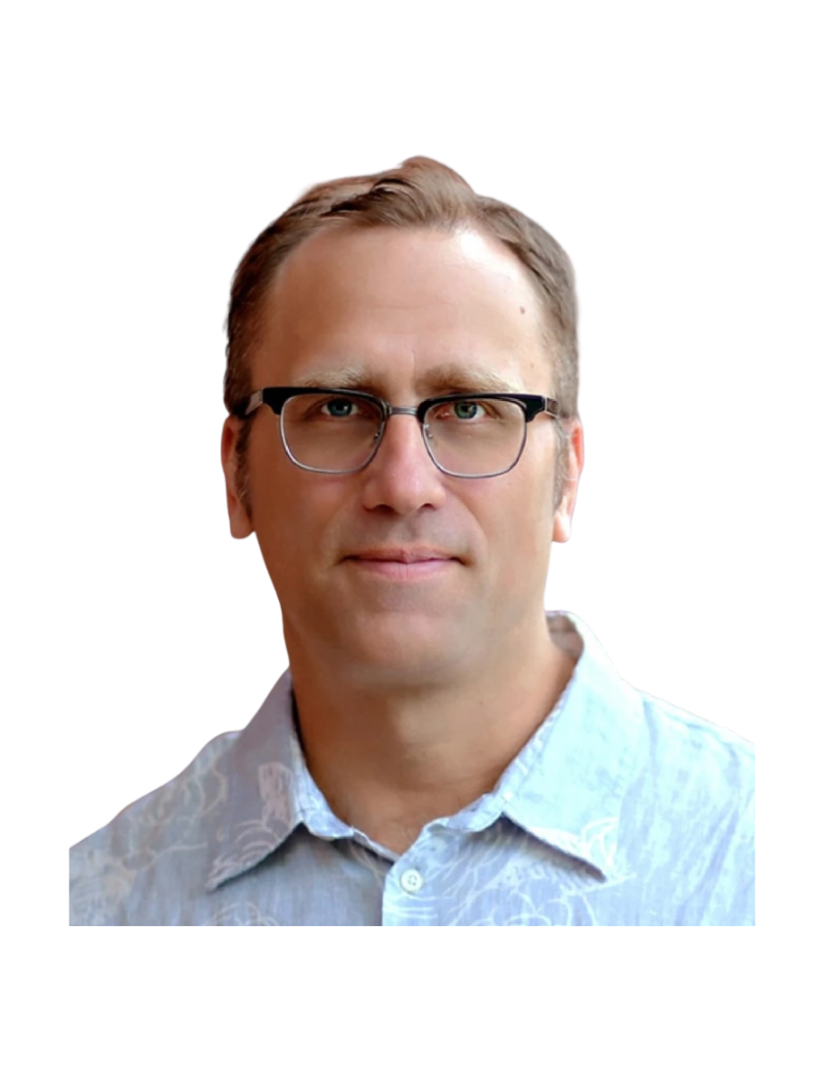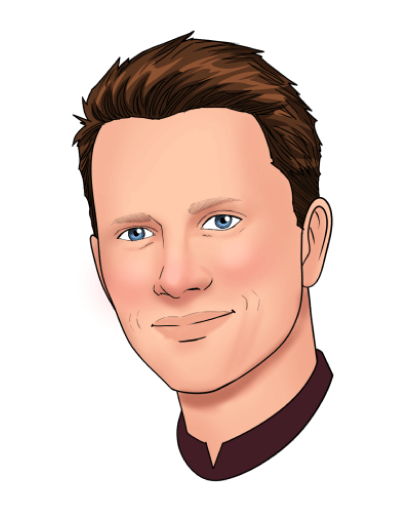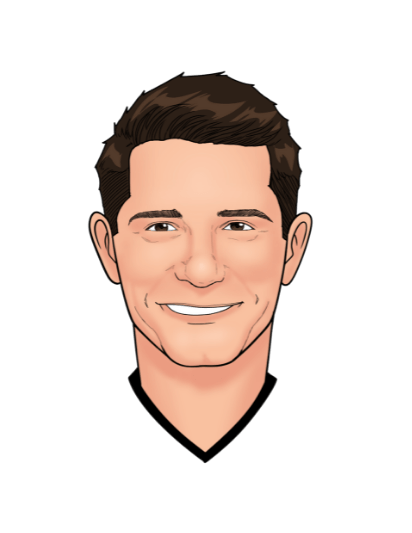
60

Episode 60 31 min
Managing Strengths to Scale: Why Hyper-Specialized Roles Are Key to Driving Growth
JP Chauvet, President of Lightspeed
00:00
00:00

“It's all about learning. The best way to learn and be a great leader is to ask how you can help your team instead of thinking how your team is going to help you.”
In this episode
In episode #60, JP Chauvet explains the importance of tying in workplace culture with outcomes to create high-performing teams.
JP Chauvet is a hands-on executive with years of experience in companies like Atex and Nstein Technologies. Today, he is the President of Lightspeed.
In this episode, JP shares how he uses data to set benchmarks and an inside look at his weekly business review meetings with his team.
Tune in to hear what JP learned early on in his management career that has impacted his servant leadership today.
Like this episode? Be sure to leave a ⭐️⭐️⭐️⭐️⭐️ review and share the podcast with your colleagues.
03:32
Managers that help you believe in yourself
05:41
People and outcomes working together
10:55
Advice to young leaders
15:41
Small companies need to specialize
18:12
Staring at data points to improve them
20:40
Coaching leaders through company growth
21:58
Lightspeed’s Weekly Business Review
28:12
From a chef to a parrot
Resources
- Follow JP on Twitter
- Connect with JP on LinkedIn
- Learn more about Lightspeed
Transcript
Aydin Mirzaee (Fellow.app) 00:00
JP, Welcome to the show.
JP Chauvet (Lightspeed) 02:13
Thank you very much for having me.
Aydin Mirzaee (Fellow.app) 02:16
JP, it’s really good to have you on the show. I’ve been looking forward to it, you have had a very extensive leadership career. You’ve worked at companies like Atex, Nstein Ixiasoft, And obviously, now you’re the president at Lightspeed. So there’s a lot that we want to talk to you about today. But I thought that a good place for us to kick-off is to rewind and say in your entire career, has there been a memorable boss or leader that you’ve reported to whether good or bad that you have memories from or that you recall?
JP Chauvet (Lightspeed) 02:52
So actually, my, one of my first bosses was probably my best. So it was at France Telecom. And at the time, I just graduated, I wasn’t I was in product management kind of, weirdly enough. And I was so at the time, we were doing specifications, and it was the first internet service. And this guy was called Osman sutar. He was half Lebanese, half French. And we were in France Telecom multimedia. So we were growing the company like crazy. And yeah, probably my most memorable and taught me a lot about leadership, and people.
Aydin Mirzaee (Fellow.app) 03:27
So what was it that you think he did particularly well if you remember?
JP Chauvet (Lightspeed) 03:32
I think ultimately, there were two things. First, I think he made me believe in myself. So he was encouraging me to make decisions. And so he was empowering me basically to do a good job. And he let me just run with what I thought was right. And then we had a very strong personal relationship. So he was kind of a mentor, and very quickly, you became someone I would look up to, and he would, I knew he would be here to course correct. But without the negative sides, of course, correcting and, you know, it was more of a supporting enough uplifting relationship. And so I made a lot of mistakes. And he helped me out and helped me see the reality through all this.
Aydin Mirzaee (Fellow.app) 04:14
Yeah. So you said that he helped you believe in yourself. Was there anything in particular that he did that, you know, basically, helped you believe in yourself?
JP Chauvet (Lightspeed) 04:25
Yeah, well, it was my first job, so I was trying to be good. And I think I was very driven. So I wanted to succeed. But you know, you’re full of doubts, and you’re, you know, you’re learning. And so, I mean, I was Product Manager, very small group. And every time I came with ideas, he would support the idea. And so yeah, that’s a great idea. Just try and do that. Be careful. Not making this mistake. But he basically let me run with my ideas. And actually, I think that was the most rewarding for me it was to see I implemented a lot of things that had a huge return on investment. So I think that’s the First thing I do now and I lead people is I want them to own the decisions and grow. And so I think that it was just great to see someone who you go into a company are full of doubts, and just as empower you to, you know, make mistakes and learn and grow. And always here to kind of has your back When, when, when you’re kind of lost.
Aydin Mirzaee (Fellow.app) 05:22
You talked about when you’re leading teams, do you remember some of you know, before we talk about how you lead teams today if we were to dial back and think about some of the first teams that you were responsible for? What were some of your early management mistakes or things that you maybe don’t do anymore?
JP Chauvet (Lightspeed) 05:41
Yeah, I think, I think the first mistake is I always had very high standards for myself. And so I was under the impression that 100% of people in front of companies would be as driven as I was, which is not the case. Now, you know, that in companies, there are people that are a more cultural fit, and people that are the more you know, the high outcome people. And so I was a bit of a dictator, I think in my first job, so it did stick well with the people who are driven, but those who were not as driven as me probably hated the relationship. So I tend, instead of trying to lift people I would try and, you know, be more of an authoritarian leader, just saying, you know, this, this, this, and I realized very quickly that, you know, you need to think about other things and just outcome and think about personalities now, how people work, and how do you make people want to work with you. So I think I was so obsessed by the outcome, that I wasn’t really taking care of people and I was just a dictator, very simply put, I was too demanding. And, and I don’t think I was very liked by everybody. And I think I see it a lot. And I’d like to be we coach a lot of young leaders, and I think the nuances of people is probably the most difficult thing to get when you’re a leader. And especially when you’re driven by success. Sometimes this success makes you almost scary, or this drive makes you scary. And so yeah, I think I was just not good at and then the other problem I had is, I was leading people that were much older than me. So I was the youngest leader in France’s telecoms history, on the digital side. And I was a director of 23 years old, which is kind of crazy when I think about it now. But you know, all these older people were looking at me going, who’s this guy who knows nothing about life and kind of telling us what we should be doing. And I think then I realized, okay, it’s not about telling, it’s about supporting, and being a good leader is not so much about being a, you know, a dictator, it’s about helping people make their mistakes and lift. And it’s a very different view than what I had when I started.
Aydin Mirzaee (Fellow.app) 07:57
Two really interesting things you said you said, you know, focusing on the outcomes, and not enough about the people? Do you think that those things are mutually exclusive, or is there a way to make them work well together?
JP Chauvet (Lightspeed) 08:14
They need to work well together. So to be a good leader, you need to be obsessed by the outcome, and you need to ensure that everybody understands the level of quality you’re expecting. And I think that’s really what we’ve done so well at Lightspeed is, you know, we never fail, no matter how hard you know, or how close we are, we just go the extra mile, always. And I think so that’s one piece. So you need to, I think this is more of a culture, this is, you know, strongly ingrained values. But I think the way to get people to understand that is not by, you know, telling them, you have to do that. But it’s by explaining the why behind this quest for the great outcome. And I think then what happens is, when you have enough people that have that culture set, it’s just so tightly ingrained into your culture that everybody just goes in that direction. But I think for me, I’m trying to think about but, you know, when, if you say to someone do this, and I want you to do this, and if you don’t do this, you’re gonna get fired. It’s a very different message than Hey, this is our culture. This is who we are as an organization, and if you want to be part of us, this is the outcome we’re expecting, you know, and so it’s just the, the, how you do it, that’s different. The objectives are always the same. The question is, how do you bring someone to want that as badly as you do? And the way forward is certainly not to try and, you know, use scare tactics or, or be forceful, without really understanding, you know, the why I think it’s fun, fundamentally, why are we doing this?
Aydin Mirzaee (Fellow.app) 09:46
So that’s really interesting. So if I understand it correctly, it’s you don’t have to change the outcome or sacrifice the outcome. It’s just you have to understand on a people level, how to get them to buy into that outcome. And for everybody, it might be a slightly different version of that.
JP Chauvet (Lightspeed) 10:02
Yeah. And I think everybody learns by mistake. So you know, you’re a young leader, you make mistakes. You adjust. And I think smart people just adjust. And so I think, yeah, it’s funny because every young leader has always the same kind of, you know, side effects, especially when they’re driven, I think it’s, it’s funny because in the early days, I was putting a ton of pressure on these leaders. And now I tend to say, Look, don’t stress we’re gonna get there, you know, you’ve got time, you know, that, you know, a career gets built in many years. And, you know, it has to be a sustainable career. So don’t, don’t try to, you know, and jump the steps. And so it’s funny because now I’ve become kind of the opposite of what I was when I was a young leader.
Aydin Mirzaee (Fellow.app) 10:47
So that’s really interesting. So for all those young leaders out there, say that are managing people that are more experienced than them. Like, what advice would you give them?
JP Chauvet (Lightspeed) 10:57
I think the biggest advice I would give is, ask yourself, how you can help the team, and not how the team can help you, especially with the more senior don’t try, you know, and no more than them because you won’t. So I think what people expect from a leader is someone that shields them, and that supports them through what they’re trying to build. So I think that’s the biggest advice I always give is, okay. Just ask your team, how you can help them, how you can help them do a better job, how you can help them how you can remove, you know, all the friction, how you can support them with with their colleagues, a young leader thinks that they need to know everything and tell their teams, what they should be doing. And I think the senior leader, will question, how can I help my team and we’ll be very open and humble with regards to you know, their teammates. And so I think simple things like you don’t have to know everything. And I think that’s the other big thing with high achievers, they feel that if they don’t know everything, they’re going to be judged, and they’re not going to be respected. And so you don’t have to know anything. You need to be sure that you understand your strengths. And you need to understand how you’re going to help your team succeed. And so become a servant to your teams. And of course, now there’s, of course, they need to follow the guidelines and your culture and what’s your mindset, but be a helping hand. Don’t try and tell people what they should be doing. And don’t try and know everything because you’ll never know everything. Yeah,
Aydin Mirzaee (Fellow.app) 12:24
I really like that framing, this is just not what they’re gonna do for you, but what can you do for them? I think that’s, that’s, that’s really wise advice. I really like that. You know, one of the things that I did want to ask you about was I think if I have it correct, did you join Lightspeed when they were at 10 million in sales? Or did you join right when that was happening?
JP Chauvet (Lightspeed) 12:48
We were slightly under, we were around 6 million when I joined. But the story here is I joined when they received the first real, you know, VC, seed round from Excel, it’s very funny, Lightspeed as a story, because it was very profitable for the first, you know, until it reached 6 million, but then it the whole, I mean, the market is so big that someone had to help Lightspeed scale. And, and that’s really what I you know, I’ve been kind of helping back since day one just put a lot of rigor because I, you know, I’ve always grown companies, that’s pretty much my DNA, you look at every company I’ve joined, we just scale very rapidly. And again, you learn from, you know, from doing this, the good, the bad, and the ugly. And so I think, for me, the goal was to join Lightspeed put a lot of rigor, and really help DAX, kind of paint the picture of how we’re going to scale this organization. And what is it and you know, I’m sure you, you know, that but every company, at every stage, needs a different methodology and a different recipe, I call it I call myself the chef. And that’s what I do. Everybody who likes me knows I’m doing soup.
Aydin Mirzaee (Fellow.app) 13:56
And it takes different ingredients to build a good soup at every step of the way of companies and in your for the audience. Dax is the CEO at Lightspeed. And just for reference, this should give people a sense of scale. You join when they were 6 million in sales and roughly like what you know, where is Lightspeed today?
JP Chauvet (Lightspeed) 14:16
Yeah, we’re in the hundreds of millions, hundreds of millions. And I think I was employee 44. And now we’re almost 2000 employees.
Aydin Mirzaee (Fellow.app) 14:27
Yeah, that’s very, very impressive. [AD BREAK BEGINS] Hey there before moving to the next part of the interview, quick introduction to tell you about one of the internet’s best-kept secrets, the manager TLDR newsletter. So every two weeks, we read the best content out there, the greatest articles, the advice, the case studies, whatever the latest and greatest is, we summarize it, and we send it to your inbox. We know you don’t have the time to read everything, but because we’re doing the work, we’ll summarize it and send it to your inbox once every two weeks. You The best news is completely free. So go on over to fellow dot app slash newsletter and sign up today. And with that said, let’s go back to the interview.{AD BREAK ENDS] Let’s talk about some of the rigor and some of the systems and things that you put into place. Like what was the, like the first set of things that that you started to implement and, and for people who are, you know, at the stage, and they’re looking to bring in rigor into their teams? And, and you know, it’s hard, because in the beginning, you’re focusing on just having the right product and getting the product-market fit. And once something has started to work, like, what are the immediate next steps, like, what’s your playbook when you go into a company?
JP Chauvet (Lightspeed) 15:41
The smaller the company, the more everybody does everything, and as a company scales, you need to specialize. And I think that’s really the job I did. So, you know, when I joined, giving you simple examples, you know, everybody was doing pretty much everything. And so, and it’s normal, and that’s, you know, how a company is at that stage. But the problem then is, what Lightspeed was facing is and every startup faces, the same problem is, you can’t hire because when you need to scale, you need to hire a lot of people quickly. But if you expect everyone you’re hiring to know everything inside of the company, it’s not a scalable model. So I think that’s the first thing we put in place, when I got to Lightspeed, we’ll say, okay, that’s hyper-specialized people. And so you know, supporting, instead of being just, you know, all support supporting everything, let’s put level one, level two, level three support, when you’re in sales, let’s break out SDRs, from you know, from business development and from account management. And then, then when we put in place, you know, onboarding, and so basically what you try and do, and even, you know, the very funny one, but our HR person was also doing billing. And that’s because, like, okay, you want to do better you do billing, and that’s what happens when you’re small. So the first, let’s say, six to 12 months, I spent my days just restructuring the groups so that people had a smaller scope. And, and the reason why we did that is then when you hire someone, instead of saying, Hey, you got to do HR and billing, and all you need to do is know how to recruit, all you need to do is know how to do SDRs. And so just job definitions, re-scoping the roles. And I think also looking at the hierarchy and looking at them because I think often when you’re small, you don’t realize it, but the structures you put in place are maybe valid for small companies. But as you scale, I think the structure of the organization becomes the most important thing, an organization that excellence and ensuring that it’s a sort of going back to my suit in ensuring that you have the right ingredients and that everybody understands what their ingredient is. And then and then ensuring we just have the right balance of all the ingredients. And I think that’s how we got the scale is you structure, you measure. That’s the other big thing I implemented was measuring. And making people understand it’s not about feelings. It’s not about, you know, impressions. It’s about data. And so getting every team to figure out, Okay, what are the four or five OKRs, I’m going to look at. And at the time was KPIs but the same, I mean, pretty much the same kind of logic, but what are you going to look at what are the four or five things you need to measure every day. And from there, we built up the whole company measurement. And then from there, it’s very easy for someone like me to build a suit and say, okay, this data point is, is the grading because we don’t have enough people, it’s one person there, and then just ensuring that we look at the right data points and that we have the teams that were segmented. And I think that it just becomes easier, because I strongly believe that, you know, you need to stare at a data point for it to improve. And if you have a data point, that is I know, oh, yeah. At the beginning of life, he does wait times because I wait times in support. I was like, Okay, what do we want to do? Okay, the wait time should be under two minutes. Cool. Let’s start at that number every day. And then, you know, those wait times went from 15 minutes all the way to our numbers, because from the moment people know this is and just share it out with your teams. And from the moment they know what they need to improve on. And from the moment you give them you know, the early days, we didn’t even have a data system, we would i would have all the leaders print out the Excel sheet every day with all the names of the because we were small, you know, we had maybe 10 support agents, but we would have all the weight the average wait times we will have the satisfaction rate per agent. And just doing that created a nice little healthy competition within the teams. And it forced us to become much better at those data points. So that just sorry, long-winded answer, but that’s really what we focused on the beginning was okay, let’s narrative scopes. Let’s measure, let’s set, you know, the benchmarks. And then from that point, let’s just improve every week. And what I launched off. At the same time as a cadence, some people I’d like to be would say that I’m very rigorous with data very rigorous, but I’m obsessed with cadence. And so what we did also is we put in place a Monday morning, weekly Business Review, where basically every leader of all the groups inside of Lightspeed was in there. They had their benchmarks, and they have to, we have to just look at all the data points. And from there, when a data point was not working, we would talk about it, and we try and find solutions. So, and that was, yeah, for the two, two first years, I think that was very painful, by the way for all the existing people. And I think that’s another big thing in my mind, the leaders you have from one to 50. And then from 50, to 202 100, to 1000, and 1000. They’re never the same. And I think that’s where we’ve been very strong at Lightspeed is we’ve managed to keep those leaders but we coach them, we strongly believe that we strongly believe in building people from within. So that’s the other big piece of our culture. And so if you look at, I don’t know, our CMO today at Lightspeed Laurie, she was a receptionist when they joined.
Aydin Mirzaee (Fellow.app) 21:11
Oh, wow, that’s crazy.
JP Chauvet (Lightspeed) 21:12
He did pretty much every job at Lightspeed. But at the same time, we had a Ph.D. in maths at the reception. I was like, why are you at the reception? It’s like, I just wanted to join Lightspeed I’m sure this company is going to be successful. And Laurie, basically, and I think it’s a very good example. She’s done everything. She’s done data, she’s on systems, she’s done. SDRs. And, and so, you know, you build truly deep knowledge. And I think most of our execs have a very, I think not a good example, for we’re very lucky that a lot of our execs have been with us forever. And they understand very deeply the company.
Aydin Mirzaee (Fellow.app) 21:46
So let’s dig into this cadence a bit more. So you call it a weekly business review. And you still have those today, like, Can you break down how long it is? who attends, like, what gets discussed?
JP Chauvet (Lightspeed) 21:58
Yeah. So they’ve, they’ve grown in time. Because you know, when you have five leaders, and you’re in one geography, and it’s pretty straightforward, but now, Lightspeed we operate, you know, we even in the Asia Pacific, now we have 400 people in Sydney and Auckland. So they’ve grown over time, but they, it’s always been the same principles. The principles are, so it’s 8:30 every Monday morning, and in the early days, when 8:30 to 9:30, so it was an hour, then it moved to 10. And now we’re at 10:45. So we started at 830. And we go to 1045. And really, we review every single piece of the business. And so it’s evolved over time, because at the beginning when we started, it was truly direct. So we have functions, and every functional leader would report.
Aydin Mirzaee (Fellow.app) 22:49
And so, what happens like do they just come in and say, Here are my numbers, here’s what happened last week, here’s how we’re tracking against goals.
JP Chauvet (Lightspeed) 22:57
Over time we’ve built, I think it’s something like close to 20 people now that do data. So we have Looker is at the core of everything that we do. And we have, you know, automated dashboards. In the early days, it was manual, so people just show up their excel sheet. But for me, the most important was to have the cadence always on the same data set. Because you need to have the benchmark you need to look and what happened over time is we added a number of data sets. And now I mean, yeah, we could, we could go on. I mean, every group now has so many data points that it’s becoming a bit unmanageable. So we went through this phase of more and more and more, then we started opening offices in Europe. So then what we had was the beginning of a matrix. So we had the functional leaders, and then we had the geographies. And that went all the way to about six months ago. So you know, first two years of sales, just direct, and we started having Europe. And now we just reorganized about six months ago, where now we have, we have three ways of looking at the business, we have the functional way of looking at it, then we have what we call gms. And these are people in charge of all the industries in where we operate. So these are basically many CEOs at Lightspeed of every industry, and then we have geographies. So it’s become, let’s say, more and more complex. And actually, we went through a phase of building a ton of datasets, and now we’re back to Okay, let’s simplify because these meetings are too long. So what we do know is we, we, you know, we’ve found, I think the right balance of datasets, but it’s like, if I’m in sales, it’s going to be how am I doing month over month, year over year, it’s going to be looking at LTV to CAC, it’s going to be at and looking at my cost of a marketing lead, it’s looking at growth and then what we do is every function so if rather than marketing its growth year over year, month over month, cost of a lead for the good SDR is qualify rates your over year, month over month. Then if I look at sales, it’s close rates, average ticket size, so It goes very, very deep. But in every department, basically, it’s no matter how deep it goes, fundamentally, now we have company OKRs. So we measure every week against those, then it all cascades down into all the regional OKRs, functional OKrs and then into the industry. Okay. So we just review that.
Aydin Mirzaee (Fellow.app) 25:24
So is everyone there throughout the meeting, like all of the leaders are also aware of every other part of the business. So it’s not like people come in present, and then they take off.
JP Chauvet (Lightspeed) 25:34
No, I think it’s good that everybody’s there because it creates, first of all, healthy competition. In a good way, you know, just I don’t know if I’m, like, right now, Australia, for us is on fire. I mean, it’s the crazy growth over there. So Nick, who’s the geography lead of Australia, then we have Adrian, that we have Mike Cantrell, to the US for North America, it’s great that they all see their numbers because it creates a healthy discussion also, like, oh, how come you guys are, you know, I think in Europe, we have close to 50%. qualify rates. And, and so I think it just creates a healthy view on the world. And, and I think also, the other thing for me is the bigger we become, the more you have distortion and communication. And so I think a lot of my time, and you know, I’m more of a parent now than a chef, I just spend my days, you know, just doing meetings and repeating, okay, this is where we’re heading, these are the OKRs and ensuring that there’s no distortion, because what happens with the, you know, very simply put, what it’s, it’s, it’s roughly 10 am here, Australia is going to bed now, right, and actually, they’ve been in bed now, because it’s 14, 15 hours, depending on the time of the year, ahead. So it’s very difficult to keep the, you know, to keep the messaging sound and I think it’s the most important thing in companies are sizes, communication, and ensuring that everybody is aligned. So going back to answer to your question, I think it’s good that everybody’s at the same meeting. And that’s a challenge just by itself, because, you know, because of time zones. But it’s a very good thing because it ensures that at least all of our leaders are aligned, and everybody sees eye to eye. And I think it’s very important also, that when I have strong or important messages to give or so I’m going to start meeting with me giving my review of the week, what, you know, I looked at all the data sets on Sunday. And my review is this is what’s great, this is not what’s great. And also use that to just talking about my feelings, you know, like, maybe it could be anything around, hey, I think communication is degraded, or I think, and just getting everybody aligned, I think is a very stressful cadence and alignment, I think is the most important thing in our stage, to just be sure that we’re an army. And we’re, you know, we’re all moving in. And we’re not, you know, we don’t have distortion of messaging, because it happens everywhere right now. And it’s very important to keep everybody aligned. And so those meetings are very important.
Aydin Mirzaee (Fellow.app) 28:12
Yeah, and I like what you said, which is like you turn from a chef to a parrot. I think that makes a lot of sense. I mean, with that many people, it makes sense that there would be distortion, and, and repetition can become really, really important. So JP, this has been really, really insightful. I mean, what it’s a great inside view of you know, how you run a 2000 person organization and growing. So one of the questions that we leave all of our guests with is for all the managers and leaders out there, looking to get better at their craft, any resources, tips, or final words of wisdom that you’d like to leave them with?
JP Chauvet (Lightspeed) 28:50
I mean, I think it all starts with having a good leader and having someone who can be your mentor, and I have a number of people that I look up to. I’m on the board of, you know, other incredible companies. I think that the first step is just don’t be scared to connect with people who can teach you because I think it’s all about learning. But apart from that, you know, this, I just think that the best way to learn is to, and the best way to be a leader is as I said at the beginning, is try and be try and think about how you can help your teams instead of thinking how the teams are going to support you. And I think then, you just got to try and it’s difficult to try and always be uplifting, and try and be you know, this person that brings everybody up, because I think no matter how big or small the company, you know, when you’re a leader, you have challenges every day you have, you have highs and lows every day and you got to deal with them. And I think trying to understand that everyone in your group is living the same scenarios and, and you have to be the end maybe that’s my style. My style is I’m, I’m always very positive. And I always want to lift people up. And I always believe in goals that are, you know, very easy. Sometimes I can scare people actually when I’m doing that, but I think just try and stay positive, and try and think about how to help your people. But there’s no secret sauce, quite frankly, so the only way you learn is by making mistakes. And hopefully, you learn from those mistakes and you don’t do them twice. And I think that’s more important than any kind of advice I could give or learn from your mistakes. I mean, I know it’s kind of a cheesy thing. But that’s pretty much the story of my career for what it’s worth.
Aydin Mirzaee (Fellow.app) 30:43
And a great place to end it. JP, thanks so much for doing this.
JP Chauvet (Lightspeed) 30:47
Yeah, thanks, Aydin. Nice talking to you.
Latest episodes
-
Zabeen Hirji, Executive Advisor and Retirement Disruptor, on How Gen AI and Purpose-Driven Organizations are Shaping the Future of Work
Episode 25
Zabeen Hirji
-
Alan Todd, Udemy Executive and Author, on Cohort-Based Learning, Psychological Safety, and Inspiring Curiosity in Teams
Episode 24
Alan Todd
-
Charlene Li, Disruptive Leadership Expert, on Customer-Centric Strategy, Big Gulp Moments, and AI Transformation
Episode 21
Charlene Li
Fellow Newsletter
Get exclusive interviews and leadership best practices directly into your inbox.
-
Episode 1
Top 10 Leadership Lessons From the Supermanagers Podcast
-
Episode 87
You Won’t Have All the Answers: Why Being Intellectually Honest and Disassociating from Ideas Makes You a Better Lead
Rémi Guyot
Chief Product Officer at BlaBlaCar
-
Episode 80
Are You a Micromanager or a Coach? Why Leaders Should Avoid Giving Advice and What To Do Instead
Dr. Julia Milner
Leadership Professor at EDHEC Business School
-
Episode 4
Rob Khazzam, CEO at Float on Building a Culture of Urgency, Customer Obsession, and Risk Tolerance
Rob Khazzam
Co-Founder and CEO at Float
-
Episode 33
Balancing Challenge and Care at Work: The Radical Candor Approach
Amy Sandler
Chief Content Officer at Radical Candor
-
Episode 3
Mark Frein, COO at Oyster on Being a Multifunctional Executive and Harnessing Pattern Recognition in Leadership Roles
Mark Frein
COO at Oyster
-
Episode 10
Empowering Your Team to Lead Fulfilling Lives
Vlad Magdalin
CEO AT WEBFLOW


